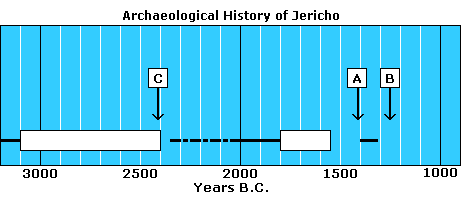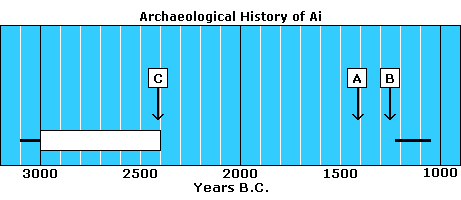
|
|
|
|
|
|
Home
About
Resources
anti-aging vitamins books
- A New Approach...
- The Exodus Happened 2450 B.C.
- Noah's Flood Happened 3520 B.C.
- Age of the Earth Collection
- Aging: Cause and Cure
- Bread from Heaven: The Manna Mystery Solved
newsletters
podcast
speaker for an event
time charts
videos
Topics
Overview
Biblical Chronology Dendrochronology Radiocarbon Dating Mt. Sinai Jericho Ai The Exodus Noah's Ark Imhotep/Joseph
Correspondence
- anti-aging vitamins
- antiquity of mankind
- ark search
- Bible chronology
- "The BC" publication
- Bryant Wood's critique
- calendars
- Heshbon
- horses and chariots in Egypt
- Jericho --- Joshua's curse
- lifespan research
- missing millennium: reception
- missing millennium: textual
- Mt. Sinai
- Noah's Flood
- Philistines
- radiocarbon
- Sodom and Gomorrah
- teaching science and creation
- the Exodus
- tree rings
- virtual history
- young earth creation
Contact Us
What's wrong with the conventional dates for the Exodus?The following article is based on Dr. Aardsma's book A New Approach to the Chronology of Biblical History from Abraham to Samuel. A more thorough discussion can be found there.Conflict with Biblical Chronology in Judges and 1 SamuelBoth of the conventional dates for the Exodus, (ca. 1450 and ca. 1250 B.C.), conflict with biblical chronological data. The so-called "early date" of ca. 1450 B.C. comes from combining the "480 years" (between the Exodus and Solomon's fourth year as king) of 1 Kings 6:1 with the accepted date for the beginning of Solomon's reign, ca. 970 B.C. However, in Judges and 1 Samuel the Bible seems to indicate that the time between the Exodus and Samuel was longer. This biblical chronological conflict is easily seen by adding up the well-known 40 years of wilderness wandering, 410 years of alternating periods of oppression and deliverance recorded in the book of Judges, 40 years for the career of Eli, 40 years for the reign of Saul, and 40 years for the reign of David. This already totals 570 years, though it does not include the time during which Joshua led Israel, nor the career of Samuel, and these two periods of time, while not specified biblically, must certainly total to something greater than 30 years (they probably total close to 80 years in fact). Thus, the biblical stipulation of 480 years from the Exodus to Solomon given in 1 Kings 6:1 conflicts with the greater than 600 year total for this same time period which one can calculate from chronological data given elsewhere in the Bible. As a result, the "early date" conflicts with these other biblical chronological data. The so-called "late date" fares even worse. It is consistent with no biblical chronological data. It was motivated by certain archaeological data in Israel, which looked more suitable to the Conquest, down around 1200 B.C. Conflict with Biblical Chronology in Acts 13Acts 13:16-20 reads: For some forty years he bore with their conduct in the desert. Then in the Canaanite country he overthrew seven nations, whose lands he gave them to be their heritage for some four hundred and fifty years, and afterwards appointed judges for them until the time of the prophet Samuel. (NEB) This translation follows the reading of the earliest manuscripts. It clearly specifies a period of 450 years after the period of wilderness wandering and before the time of Samuel. In fact, the text seems to indicate a period of 450 years, followed by a period of judges of unspecified duration "until the time of the prophet Samuel." This 450 years does not include the wilderness wandering, Saul's reign, or David's reign, all of which transpired between the Exodus and Solomon. Thus Acts 13 is consistent with the chronological data in Judges and I Samuel, but in conflict with the "480 years" of 1 Kings 6:1. Conflict with the Archaeology of EgyptThe biblical record claims rather forcefully that the Exodus was immediately preceded by a whole series of national disasters in Egypt. These included the complete pollution of the Nile, infestation of the land with frogs, gnats (or lice), and great swarms of insects, death of all Egyptian livestock, boils on all the people, destruction on all standing grains by hail, stripping of all vegetation in the land by locusts, complete darkness in the land for three days, and finally, death of all first-born sons throughout the land of Egypt. Furthermore, the Israelites not only deprived Egypt of its slave labor when they left, they also despoiled the land by carrying away much of its wealth in the form of gold, silver and clothing (Exodus 12:36). And, finally, the pharaoh and his army were drowned (Exodus 14:5-15:21), depriving the nation of its armed forces. One would certainly expect to find the mark of this national disaster in the archaeological record of Egypt. Events of this sort are not difficult to locate archaeologically. However, at the traditional ca. 1447 B.C. date for the Exodus the opposite is found. Egypt is seen to be prospering. The "late date" for the Exodus fares no better. Merneptah left a record of his military success in Palestine in which he mentions that he decimated Israel. This single inscription guarantees that Israel was established as a nation in Palestine by the reign of Merneptah, forcing the date of the Exodus into the early part of the reign of Ramesses II at the latest. But, as with the "early date" above, there is no sign of anything which could possibly correspond to the biblical Exodus in the reign of this pharaoh or his immediate predecessors. Life carried on as usual in Egypt all through this time. Conflict with the Archaeology at Jericho
The illustration below shows the history of Jericho as reconstructed from archaeological reports. The dashed line represents a campsite, the solid lines represent an unwalled town, and the rectangles represent a walled city. The letter 'A' marks the traditional early date for Joshua's Conquest of Canaan, 'B' marks the traditional late date.  The Bible is clear that Joshua and his army conquered a walled city at Jericho. It is immediately apparent that the two traditional dates for the conquest (ca. 1407 B.C. and ca. 1250 B.C.) are in conflict with the archaeology of Jericho. Conflict with the Archaeology at Ai
The illustration below shows the history of et-Tell, the modern ruins associated by almost all scholars with the biblical Ai. Again, the solid lines represent an unwalled town, and the rectangles represent a walled city. The letters 'A' and 'B', mark the early and late dates for the Conquest, respectively.  Once again, it is clear that the archaeology of Ai is incompatible with the conventional dates for the Conquest. Since et-Tell is clearly incompatible with both the early and the late dates for the Conquest, some have suggested that et-Tell is not the biblical Ai at all. However, the geography, archaeology, and topography of Ai fit the biblical account. It is only the traditional biblical chronology date that doesn't fit. ConclusionThe lack of secular archaeological/historical evidence for the Exodus and Conquest at the conventional dates has caused most scholars today to conclude that the Bible's accounts of the Exodus and Conquest are fictitious. THIS IS THE WRONG CONCLUSION. The conventional dates are all that is wrong. They are faulted both biblically and archaeologically, as seen above. They are, in fact, a thousand years too recent. (See What is the missing millennium discovery?) The foregoing article was based on Dr. Aardsma's book A New Approach to the Chronology of Biblical History from Abraham to Samuel. A more thorough discussion can be found there. |